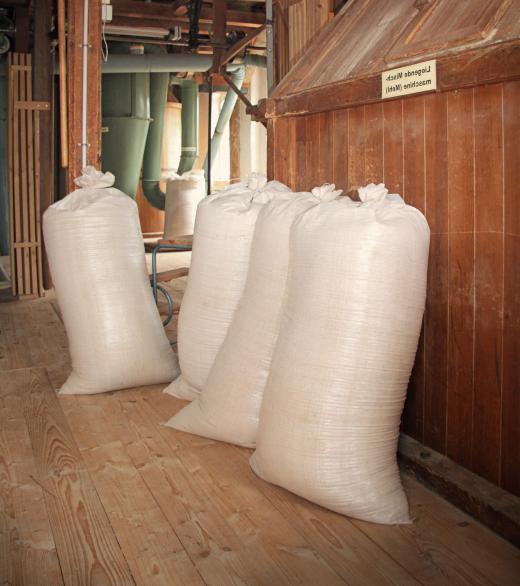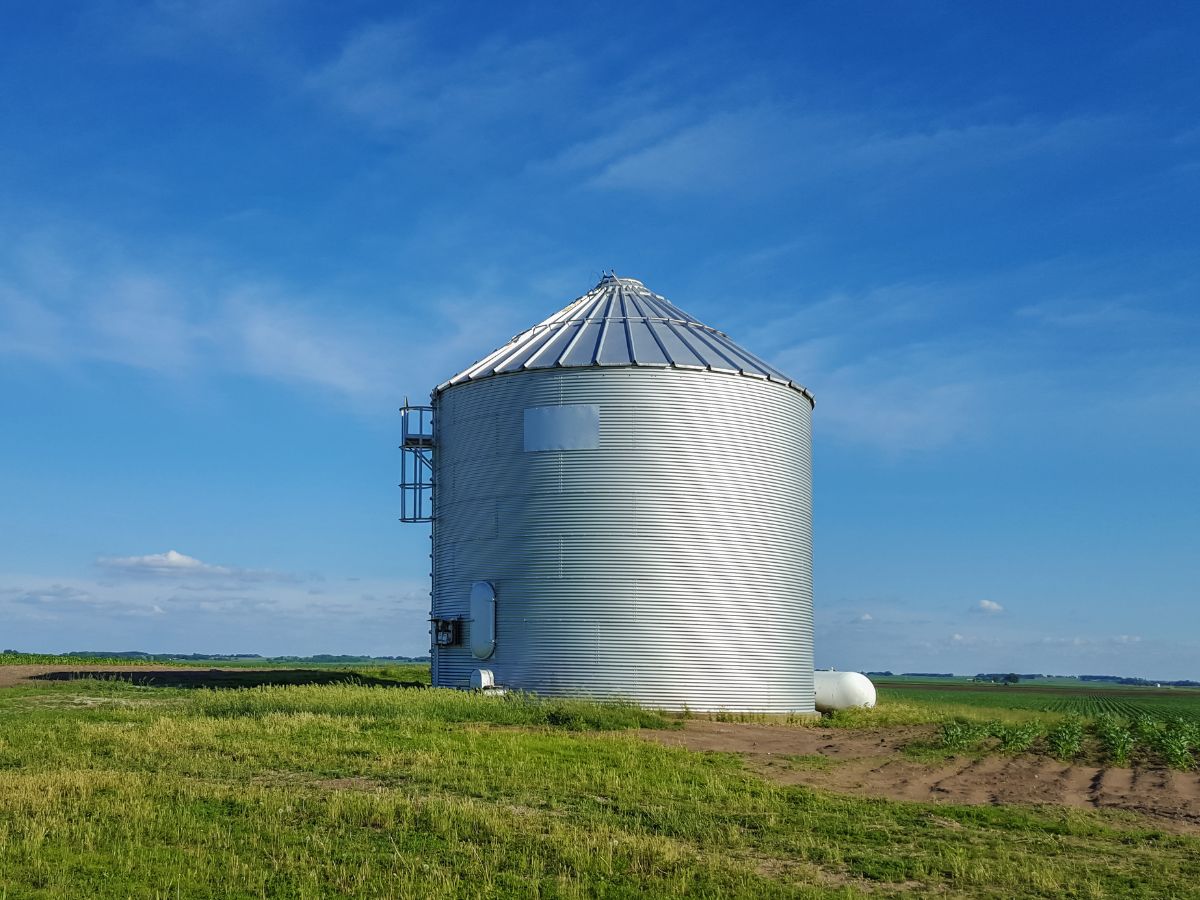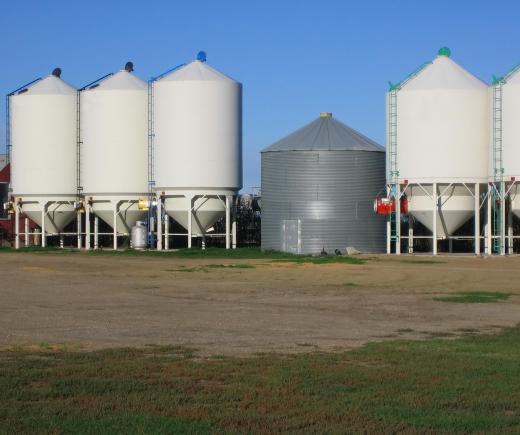A grain silo is a structure created to store materials in bulk. They are usually tall and cylindrical, but can also be constructed in the form of warehouses, domes, or large elongated bags. They primarily hold grain, seed, or silage, fodder that is harvested green and then stored and left to ferment. This fodder is then used to feed livestock or as a biofuel, and is usually grass, alfalfa, sorghum, oats, or maize.
The three primary types of grain silos are bag silos, bunker silos, and tower silos. Bag silos are an inexpensive way to store grain and silage, and they are made out of a heavy, durable plastic, usually 6 to 8 feet (2 to 2.5 meters) in diameter, and can be of any length. They are often used for overflows, when more storage space for grain is necessary.

To access the grain, farmers simply tear through the plastic, using any sharp object. Each section of the bag is cut open, until all the grain has been removed and used as needed. Some farmers use this method exclusively, due to its ease of access, low maintenance requirements, and inexpensive price.

Bunker silos are similar to bag silos in that they both store grain and silage, and are made primarily of heavy-duty plastic. These silos are created by digging a pit in the ground and filling it with grain until it forms a large mound. A large plastic tarp is then placed over the mound and covered by heavy objects, usually rocks, to prevent it from blowing off. Concrete walls are sometimes formed around it for protection. Bunker silos are inexpensive and require little upkeep.

Tower silos are the most common type of grain silo. These tall structures can be up to 275 feet (84 meters) high, and are typically made out of concrete. The tower silo uses gravity to pack and distribute the grain. The weight of the material pushes down, compressing the bottom layers, allowing more room for storage.
A recurring issue with tower silos is deterioration due to the storage of silage, which is highly acidic. Over time, it can begin to eat away at the walls of the structure. A high level of maintenance is required or the silo can collapse. Each time it is emptied, the farmer should do a thorough check of the entire structure to ensure that no damage is present.
